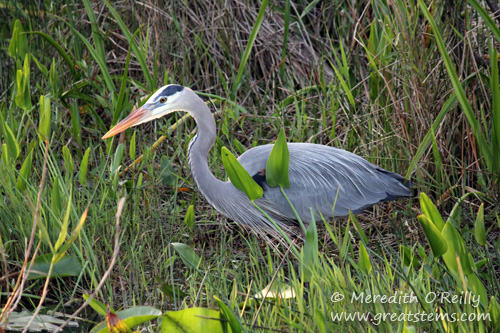 Continuing with the story about our Florida trip, Destination Everglades, we couldn’t help but fall in love with the Anhinga Trail, located near the Royal Palm Visitor Center, which is a few miles from the Ernest Coe entrance to the national park. The trail consists of a short boardwalk over a sawgrass marsh, where an abundance of alligators, turtles, snakes, and countless species of birds feed and nest.This trail is the must-see spot if you only have time for a short visit to the Everglades. I also recommend that if you can, stay until dusk.
Continuing with the story about our Florida trip, Destination Everglades, we couldn’t help but fall in love with the Anhinga Trail, located near the Royal Palm Visitor Center, which is a few miles from the Ernest Coe entrance to the national park. The trail consists of a short boardwalk over a sawgrass marsh, where an abundance of alligators, turtles, snakes, and countless species of birds feed and nest.This trail is the must-see spot if you only have time for a short visit to the Everglades. I also recommend that if you can, stay until dusk.
Although we visited the Anhinga Trail on two different days, I’m going to combine images here.
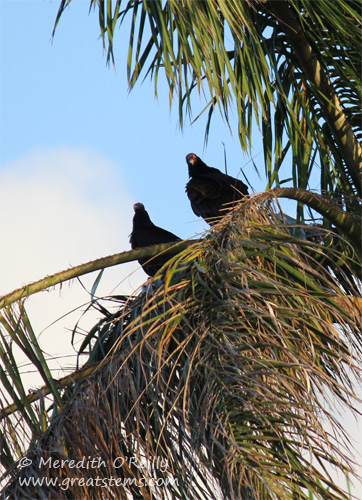 If the vultures that greet you as you arrive seem ominous, there’s a reason for it, but it’s not what you might think. I’ll explain in my next post — yes, more suspense!
If the vultures that greet you as you arrive seem ominous, there’s a reason for it, but it’s not what you might think. I’ll explain in my next post — yes, more suspense!
I wasn’t so clever as to get an overall shot of the boardwalk itself, as I couldn’t draw my eyes away from the plentiful fauna.
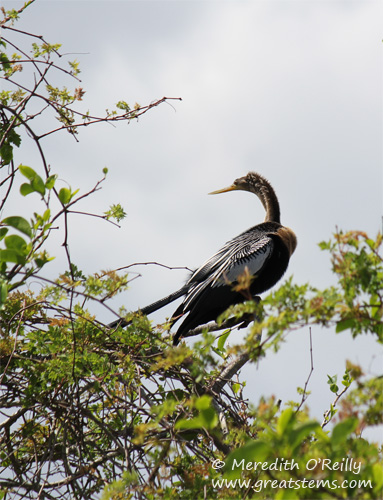 Anhinga
Anhinga
The popular trail is named after this bird, a diving and swimming bird called the Anhinga.
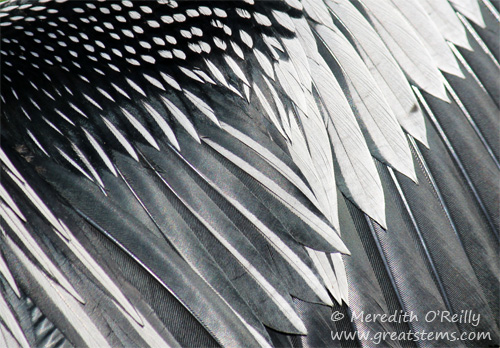 The Anhinga typically swims with most of its body submerged and only its neck and head above water, but it can also dive under the surface to search for fish. It is unable to use oil to waterproof its feathers the way ducks do, and as a result the feathers become waterlogged when it swims.
The Anhinga typically swims with most of its body submerged and only its neck and head above water, but it can also dive under the surface to search for fish. It is unable to use oil to waterproof its feathers the way ducks do, and as a result the feathers become waterlogged when it swims.
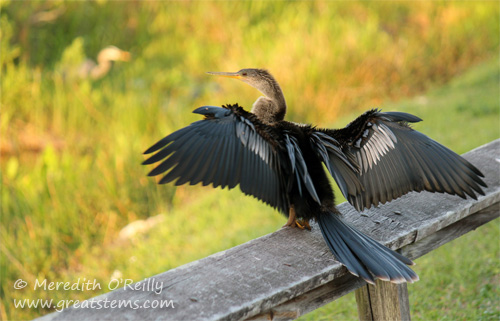 This is why Anhingas are often seen with outstretched wings drying in the sun.
This is why Anhingas are often seen with outstretched wings drying in the sun.
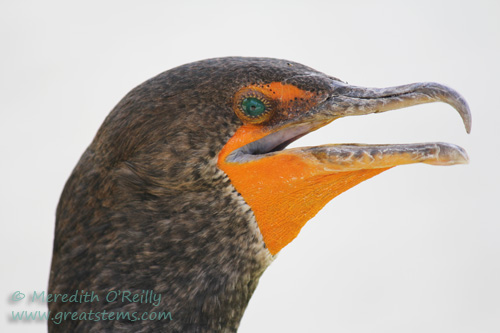 Double-crested cormorant, above and below
Double-crested cormorant, above and below
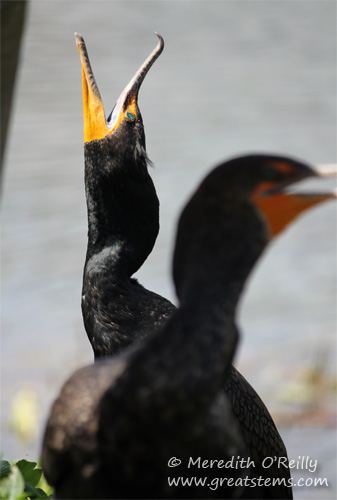 Another great underwater swimmer is the Double-Crested Cormorant, shown above. I got a glimpse of one swimming below the surface, but alas, I was too mesmerized to take a picture. Like the Anhinga, the cormorant often stretches out its non-waterproof wings in order to dry them.
Another great underwater swimmer is the Double-Crested Cormorant, shown above. I got a glimpse of one swimming below the surface, but alas, I was too mesmerized to take a picture. Like the Anhinga, the cormorant often stretches out its non-waterproof wings in order to dry them.
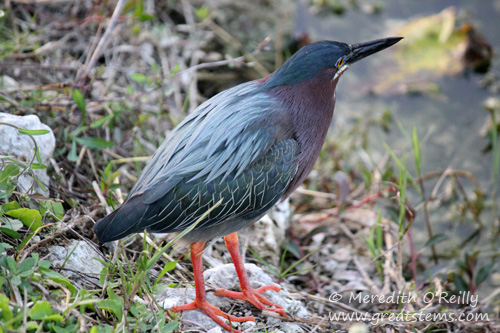
Green Heron
I think my favorite Everglades bird, if I were forced to pick one, was the Green Heron. The muted earthy colors of this gorgeous bird really aren’t well represented by the words “Green Heron.” The feathers were so uniquely stunning, I didn’t even realize how brightly orange the heron’s legs were until I got home to the computer. But I was just as fascinated by the way it stalked its food, crouching down low to study the water for any slight movement and being ready to quickly nab its prey.
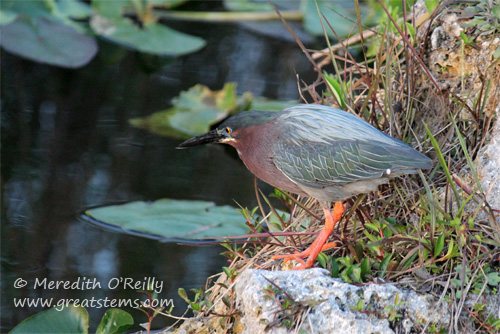
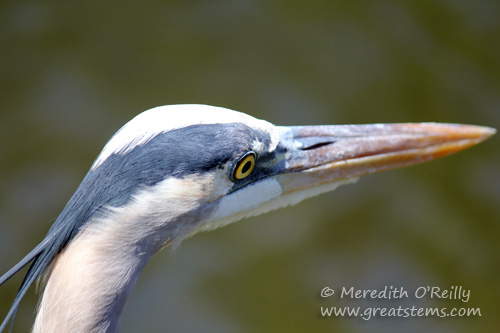
Great Blue Heron (also seen at top of post)
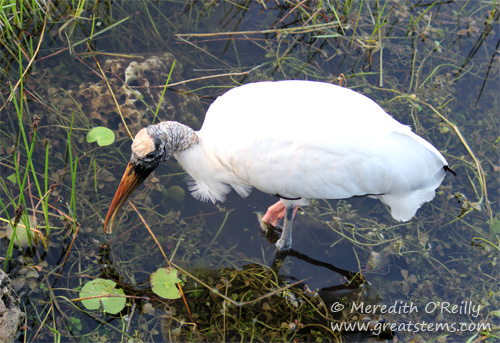
Wood Stork (Endangered)
During our first visit to the Anhinga Trail, an endangered Wood Stork graced us with its presence. The animals along the trail are remarkably complacent, and the Wood Stork was no exception. Off in the distance, we could see three more in a tree.
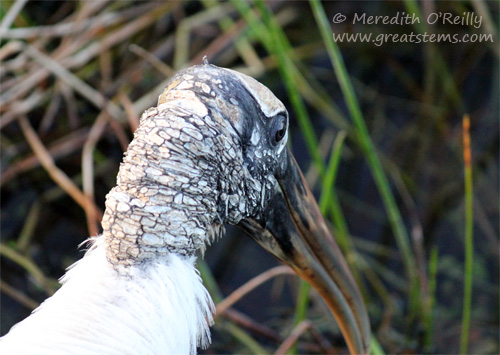 I was surprised at how many people considered this bird unattractive. I found the lack of head feathers simply that which makes it unique. Baldness can be quite a sexy feature, you know. (Side note: For the record, I was totally Team Picard, not Team Ryker.)
I was surprised at how many people considered this bird unattractive. I found the lack of head feathers simply that which makes it unique. Baldness can be quite a sexy feature, you know. (Side note: For the record, I was totally Team Picard, not Team Ryker.)
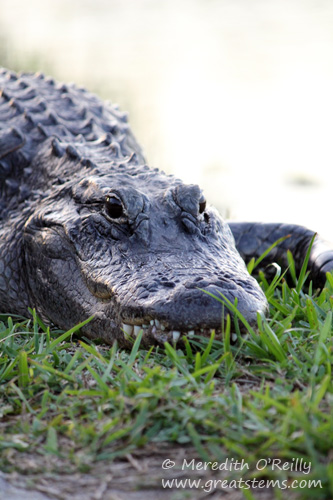
Of course there were plenty of American Alligators, big and small.
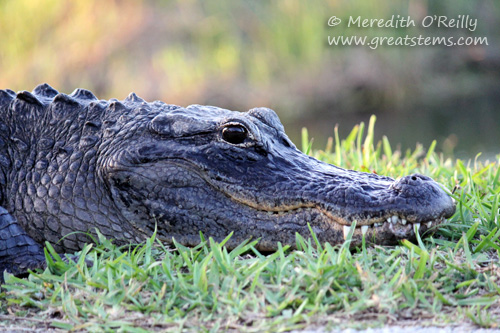 We were even witness to the stealthy attack one made on a bird that was preening in the water. Poor bird. Happy alligator.
We were even witness to the stealthy attack one made on a bird that was preening in the water. Poor bird. Happy alligator.
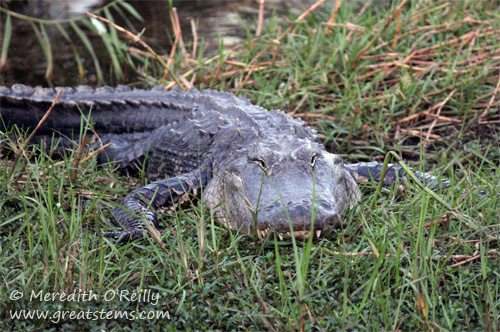 It wasn’t this large alligator, which didn’t move… at… all. I suspect, given its size, that at other times it moves quite fast.
It wasn’t this large alligator, which didn’t move… at… all. I suspect, given its size, that at other times it moves quite fast.
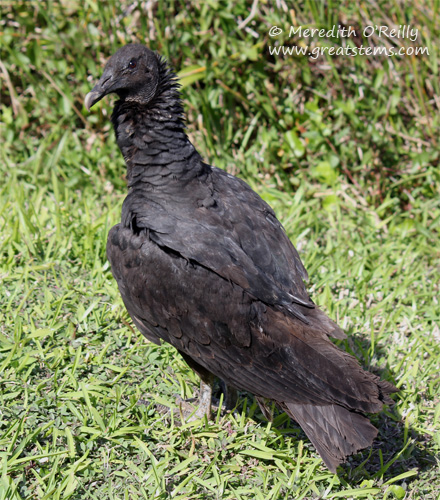
Black Vulture
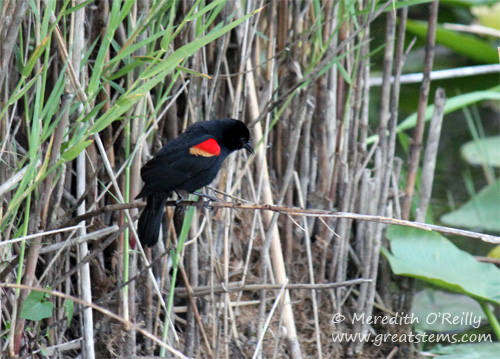
Red-Winged Blackbird
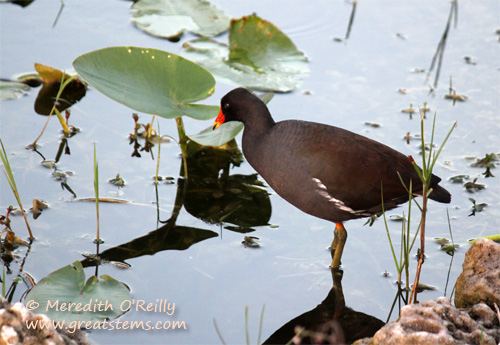 Common Moorhen
Common Moorhen
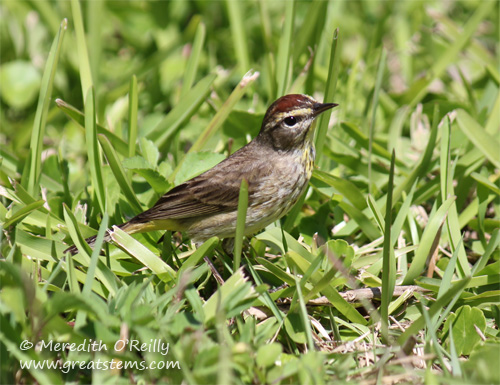
Palm Warbler
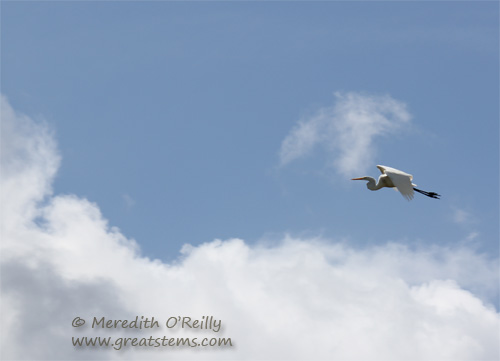
Great Egret, above and below
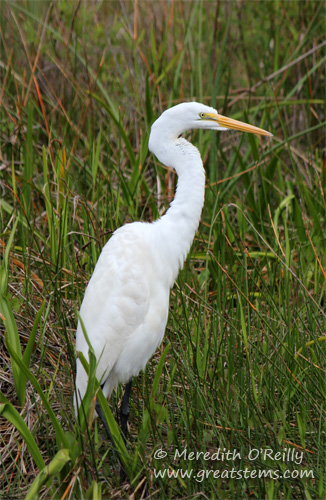
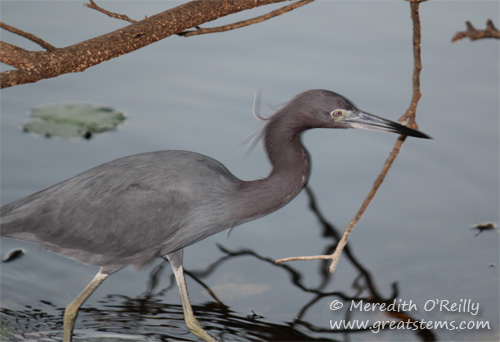 Little Blue Heron
Little Blue Heron
We saw lots of other birds, including Tricolored Herons, ibises, sparrows, and several that I’m still trying to accurately identify.
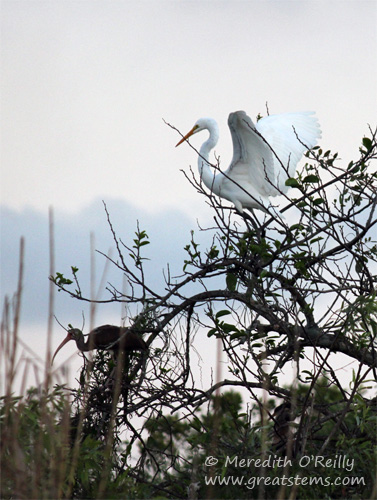
As the sky darken, birds came in to roost, like the White Ibis (juvenile) and Great Egret above. Parents settled in with their younglings in their nests, and multiple species decorated the trees like ornaments.
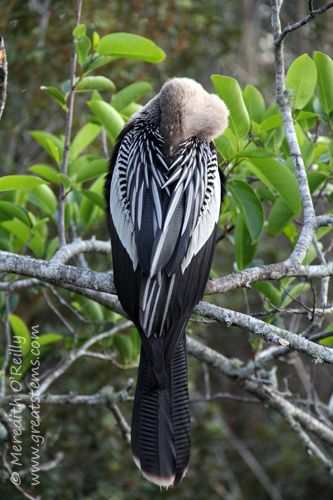
Sleeping Anhinga
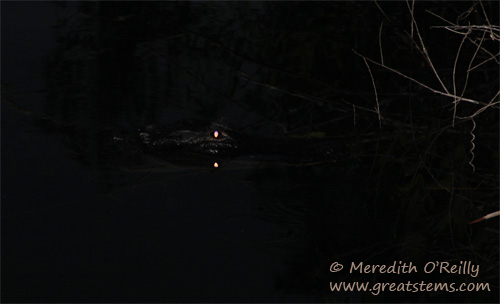 As it got dark, I took one final picture for the evening — I wanted to see the eyes of an alligator on the water. I was rewarded with the reflection, as well!
As it got dark, I took one final picture for the evening — I wanted to see the eyes of an alligator on the water. I was rewarded with the reflection, as well!
Next tale to come, our canoe trip at 9-Mile Pond!
Some great photos here Meredith — that cormorant eye is freaky!
Love the wood stork head too, as it looks something like stonework.
Both very unique and special birds, Alan. I feel lucky to have been able to see them so close up.
Meredith this was amazing..I am not a fan of the touristy FL but the wildlife is incredible…I will note tis trail if I ever do get to the Everglades….loving the tale of your vacation…can’t wait for the next post!!
I’m on it, Donna — it’s been a hectic week, but the next post is coming soon!
Great photos and birdwatching, Meredith! I remember this trail well. We arrived at the Everglades a few years ago at dusk and enjoyed the roosting of birds and viewing of alligators as the sun went down. It was quite amazing. Did you ever see my post about it? http://www.penick.net/digging/?p=6777
Great photos, too, Pam! Such activity as the sun goes down….